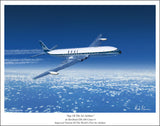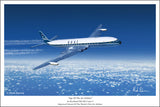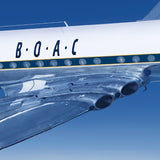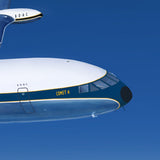The de Havilland DH.106 Comet first flew on July 27, 1949. It is a four engine, narrow body design and is the world's first commercial jet airliner. The Comet entered service May 2, 1952 with the British Overseas Airways Corporation (BOAC).
The Comet featured a crew of four in the cockpit, pilot, copilot, engineer and navigator. Passengers used to propeller driven aircraft of the day enjoyed relatively smooth and quiet flight. The jet engines allowed for cruising altitudes well above 40,000 feet which kept the aircraft well above the weather.
Within the first year of operations, there were three Comets lost in accidents. Two of them breaking up in flight and one due to weather related overstressing of the airframe .The structural failures were found to have been a result of metal fatigue in the airframe. This phenomenon was not fully understood at the time. As a result, the Comet was extensively redesigned. The changes included structural reinforcements and other changes such as changing the cabin windows to an oval shape which alleviated stress concentrations in those areas.
The improved aircraft went on to give good service. The final version was the Comet 4 series which debuted in 1958. It had a range of 2,802 nautical miles which was more than double the original aircraft. Cruising speed was well over 500 MPH thanks to the four Rolls Royce Avon Mk 524 engines. The Comet 4 remained in commercial service until 1981,
My artwork depicts this beautiful pioneer of the jet-age in its element.








